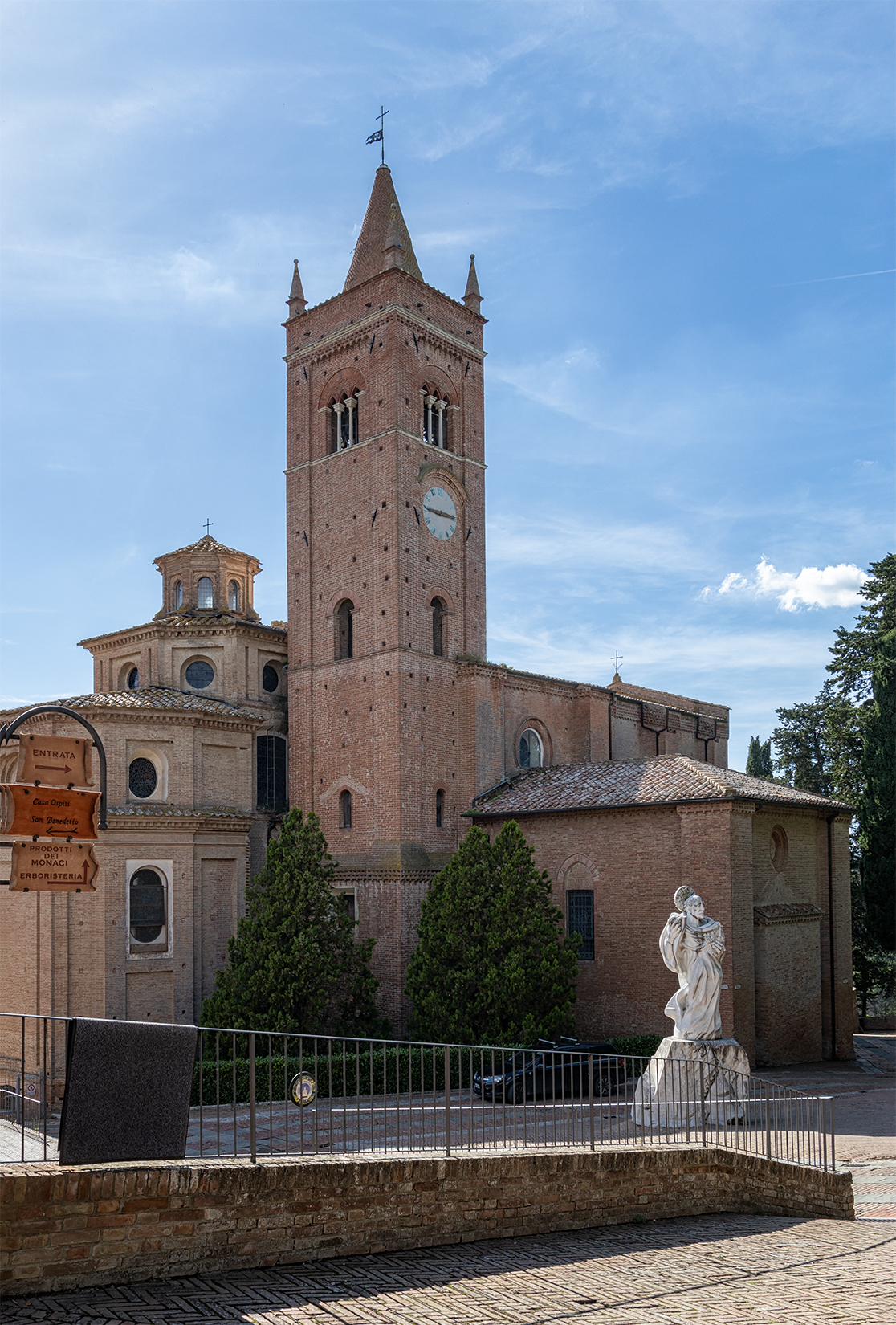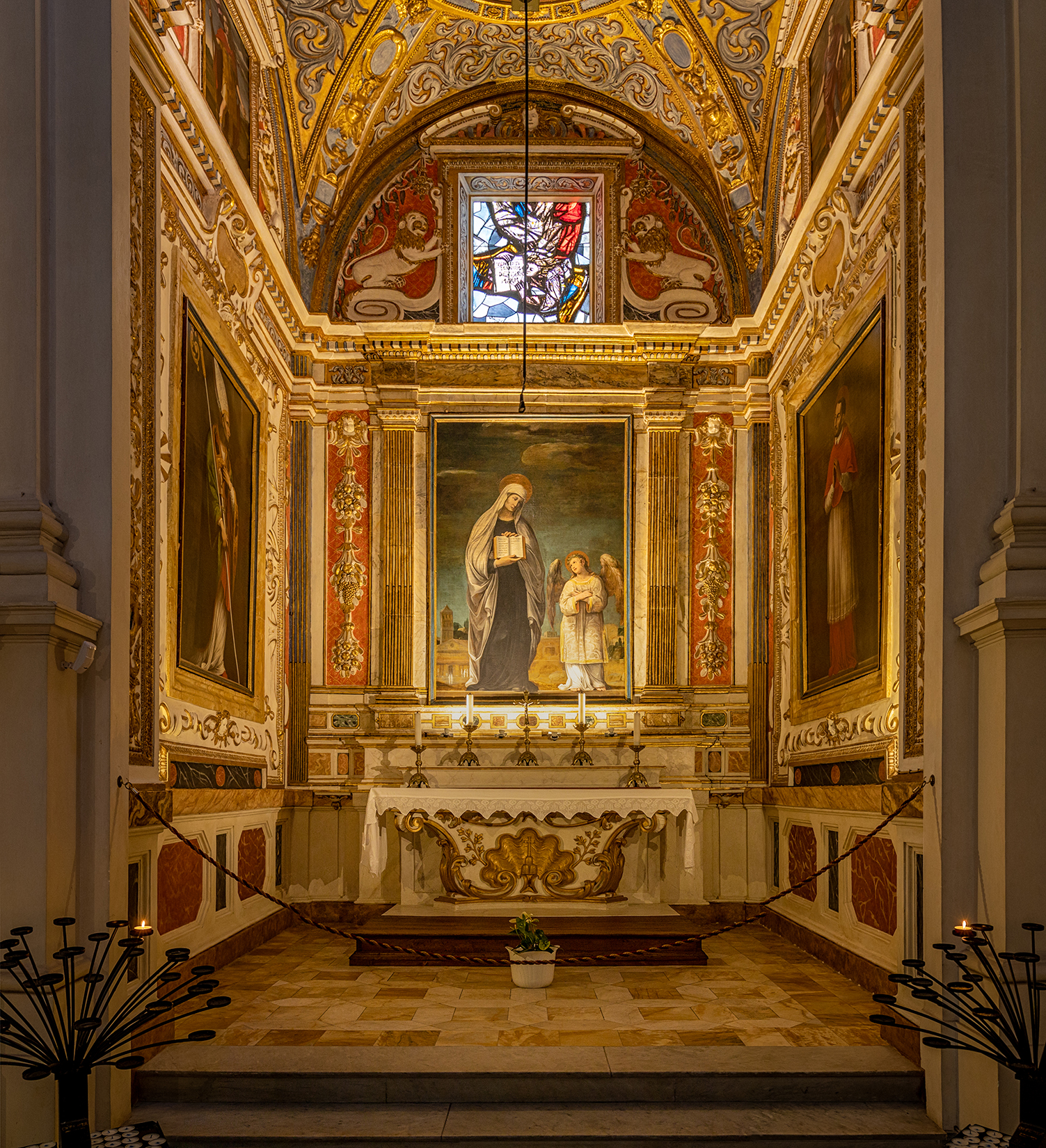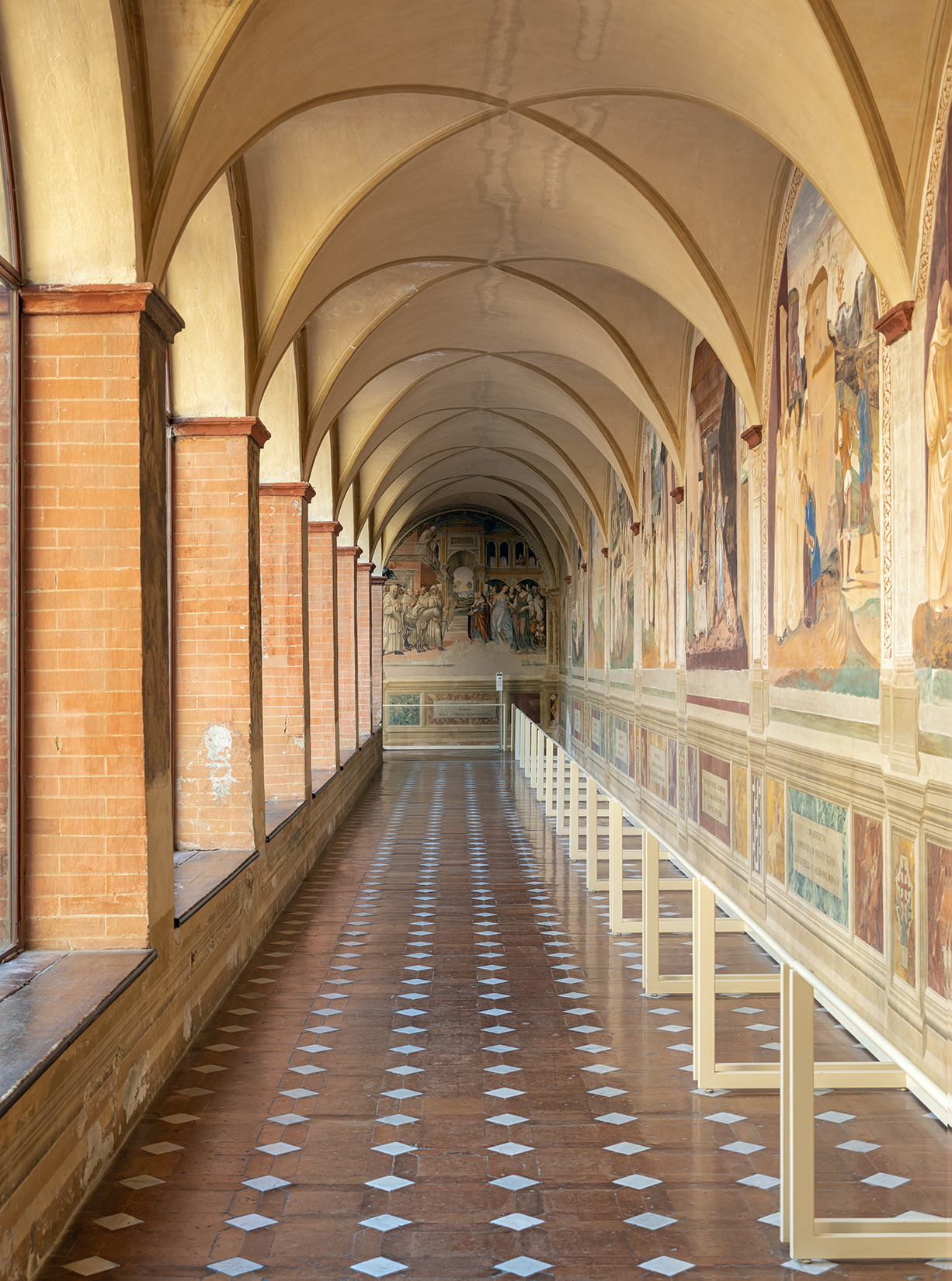The Benedictine abbey of Monte Oliveto Maggiore sits on a hill close to the town of Asciano, about 20km NW of San Quirico D’Orcia. The abbey was founded by Olivetan monks under Saint Bernardo Tolomei in the early 14th Century. The oldest buildings date from about 100 years later, the abbey cathedral being built between 1400 and 1417 and the great cloisters between 1426 and 1443. The cloisters are particularly notable for the frescoes of the life of St Benedict, painted at the end of the 15th century by Luca Signorelli and Antonio Bazzi. Most of the frescoes retain bright vibrant colours, despite their age.
The Cathedral
The cathedral was built between 1400 and 1417 in Italian Gothic style and from the outside appears fairly simple, being finished in brick. The extremely ornate interior was re-furbished in Baroque style in the late 18th century.
On either side of the apse are two small chapels, each richly decorated. The left one is dedicated to St Benedict, whilst the right one, shown below is dedicated to Saint Francesca Romana, who is interestingly the patron saint of motorists, despite dying some 450 years before the invention of the car.
The Cloisters
One of the most interesting parts of the abbey are the cloisters, which were built between 1426 and 1443. The cloister walls are decorated with a total of 36 frescoes depicting scenes from the life of St Benedict. The earliest 8 frescoes were painted by Luca Signorelli around 1497-8, then the remaining frescoes were added by Antonio Bazzi starting in 1505. Whilst some have decayed. most are remarkably well preserved with bright and vivid colours, despite their age and the fact that they are effectively in an outdoors environment.
The Refectory
Another interesting part of the abbey is the refectory, dating from 1390. This is decorated with numerous frescoes, but dominated bt a painting of the Last Supper by Lino Dinetto, though this is a recent addition from 1948. It was interesting the way that the painting and the way it was lit picks out the central figure of Jesus, something I have tried to emphasise in the image below.







